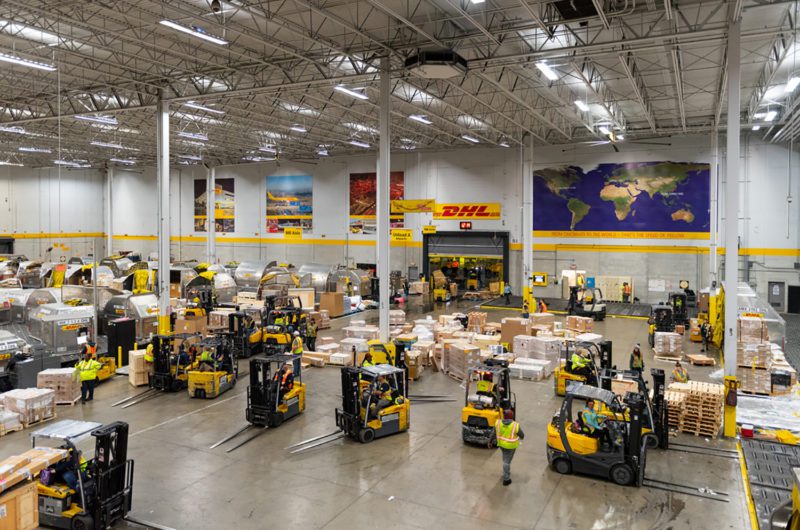
Key Issues
21st Century Customs Framework (21CCF)
The 21 CCF is a broad effort by CBP to strengthen and expand the agency’s enforcement capabilities in order to meet the challenge of the constantly increasing volume of incoming trade, much of it driven by e-commerce. CBP has proposed a series of legislative changes that would provide the agency with more information, an enhanced penalty regime and inspection authorities, streamlined legal recourse against perceived violations, and expanded recordkeeping requirements. The trade community has proposed several legislative changes designed to enhance CBP’s ability to facilitate legitimate shipments and wants to see these issues included in the package of new rules as well. The Customs Operations Advisory Committee (COAC) did not concur with the final version of the 21CCF plan due to the lack of facilitation measures. CBP has provided the legislative package to Congress where it is undergoing discussion with relevant staff.
De Minimis Shipments and E-Commerce
The Section 321 de minimis provision, which allows low value shipments to enter the United States free of taxes and duties, was established by Congress decades ago and raised to the current level of $800 in 2016, “in order to avoid expense and inconvenience to the Government disproportionate to the amount of revenue that would otherwise be collected.” (19 USC 1321). For almost 100 years, de minimis has been a key feature of the U.S. customs system. Rather than a “tariff loophole,” de minimis is a deliberate policy choice Congress got right and accurately stated its benefits in the Trade Facilitation and Trade Enforcement Act when it noted that higher de minimis value thresholds provide “significant economic benefits to businesses and consumers in the United States and the economy of the United States through costs savings and reductions in trade transaction costs.”
Section 321 is also not some anomaly unique to the United States. The concept enjoys support from international organizations including the World Customs Organization and the World Trade Organization. In fact, when raising the U.S. level to $800, Congress found that the U.S. “should encourage other countries, through bilateral, regional, and multilateral fora, to establish commercially meaningful de minimis values.” Congress established the Section 321 de minimis provision to allow a simplified entry process for low value goods, and the success of this policy is being validated every day by the small businesses and individual consumers who benefit from it.
With the advent of e-commerce, the de minimis provision became an indispensable part of the process to provide a streamlined and simplified border clearance procedure that allows small businesses and individual consumers to engage in e-commerce without needing to fill out cumbersome forms or employ the services of a customs broker. E-commerce is a significant driver of U.S. economic prosperity and has been particularly important in stimulating the growth of U.S. small and medium enterprises (SME) by providing a highly efficient channel for importing goods they require, as well as access to global markets for exporters to sell their products. The critical importance of e-commerce and its role in the modern economy has never been more clearly illustrated than in America’s response to the COVID-19 pandemic. From the initial onset of the pandemic, e-commerce was the main channel in providing the personal protective equipment, medicines, medical devices and numerous health supplies that hospital staff and other first responders required, thus contributing to saving many lives. When lockdowns associated with controlling the spread of COVID restricted citizens’ ability to obtain food and other essentials, e-commerce became a vital support line for families and their main means of ensuring they could safely receive the basic commodities they needed to survive through the pandemic. For similar reasons, at a time when the world is experiencing supply chain shocks, doing away with de minimis would only add more delays (and more costs to traders) at the border.
The border clearance and security processes of the United States set a gold standard for best practices that is not matched by any other country. Our de minimis value is one of these best practices, as it allows small and medium businesses to import low value components for a manufacturing process or goods for retail sales, with the assistance of the carrier to ensure they are compliant with all customs regulations. These competitive advantages would be lost if the U.S. de minimis value were eliminated. A broad coalition of trade associations are constantly working to ensure the benefits of de minimis remain in place for U.S. consumers and companies.
EAA feels the 321 process could be improved by providing CBP with more information on de minimis shipments. Procedures to accomplish this goal are currently being tested in the 321 data pilot, which includes previously unregulated parties who can provide valuable data to the CBP targeting process. CBP has drafted a new rule to provided the authority to collect such data, and the rule currently is going through the interagency review process. Another step the Government could take to improve enforcement on de minimis shipments would be to publish a denied parties list of bad actors who abuse the de minimis privilege by undervaluing the shipments or shipping illicit goods through de minimis channels.
Congress has introduced several bills over the past few years that would reduce the application of de minimis procedures by limiting the number of shipments from some countries and requiring those shipments to go through the informal entry process and pay tariffs. EAA feels these actions would be inadvisable and would have a negative impact on the U.S. economy, particularly on small businesses and lower-income consumers. Congress should wait for the publication of the new rule requiring more information on de minimis shipments before taking any further actions.
Export Modernization
Today, the process for exporting shipments from the United States is a highly manual and labor- intensive exercise. Under the auspices of the COAC, CBP and the trade community created the Export Modernization Working Group to address this problem. The Group published a white paper in 2022 which identified the centerpiece of the future export process as a progressive filing model of data transmission. In this model, shipment information is decoupled from transportation information and the paper export manifest of today is deconstructed into its constituent components of house bill, master bill and conveyance information. In this manner, progressive filing makes possible the earliest possible transmission to CBP of the house bill data that is most critical to risk assessment. Master bill and conveyance information are added to the shipment’s ACE manifest record later in time, as each piece of information becomes available. The model allows the linkage of AES information to manifest information at the lowest level – the house bill – and at the earliest time to further facilitate risk targeting.
Progressive filing further allows data to be provided to CBP in line with the Trade Act of 2002’s directive that data be provided by the party in the best position to do so, which for the express industry means the express consignment operator (ECO) will provide the shipment level data as soon as it is available in their automated system, with the final manifest being submitted shortly after the flight’s departure. Because it enables early risk assessment, progressive filing allows early shipment interception and inspection, at a point in the supply chain before shipments have been consolidated, moved to the port of export, containerized, and/or loaded. The location of these inspections will be coordinated between the ECO and CBP to identify the port of availability, the location where the shipment is available before it has been consolidated and where CBP has the appropriate officers to conduct the inspection.
Progressive filing will facilitate CBP’s ability to target and enforce in the export environment while imposing the minimum operational and financial burden on carriers. The goal of all stakeholders is a system that is maximally efficient and functional for carriers and CBP.
Export Controls
With the Russian invasion of Ukraine and the deterioration of U.S. relations with China, the U.S. Government has expanded the imposition of export controls on dual use and high technology products formerly shipped to those countries. In implementing the new rules, the Unites States should collaborate closely with our allies to ensure:
- The implementation of the new export controls regime is conducted to ensure the maximum level of harmonization between allied systems. EAA recommends a balanced approach to export control cooperation between the U.S. and other governments that considers economic impact along with national security so as not to put any country’s firms at a competitive disadvantage.
- In particular, the Governments should agree on controls for cybersurveillance technology, including a list of what products fall under their respective regimes, the countries where export of the technology should be restricted, and criteria for granting licenses. The core principle of this effort should be “higher walls around fewer goods.” We should be focusing on prohibiting the export of critical technology, not restricting trade.
- Governments should share best practices for coordinating among the various Government agencies with export control authorities to ensure a more streamlined and efficient border clearance process for restricted goods, to include greater alignment between the International Traffic in Arms Regulations (ITAR) and other countries’ controls on military items.
- As part of this effort, Governments should agree on a standard approach to goods in transit that does not require logistics providers to obtain licenses for products that will not enter the commerce of the relevant nation(s). Free movement is a bedrock principle that should be applied, with practical consideration, to the movement of goods.
- The U.S. should leverage the experience with integrating the AEO trusted trader regime in an export context, and its applicability to reducing risk for export controls compliance, with a view toward creating a voluntary CTPAT program for exports from the U.S. with tangible, meaningful benefits.




